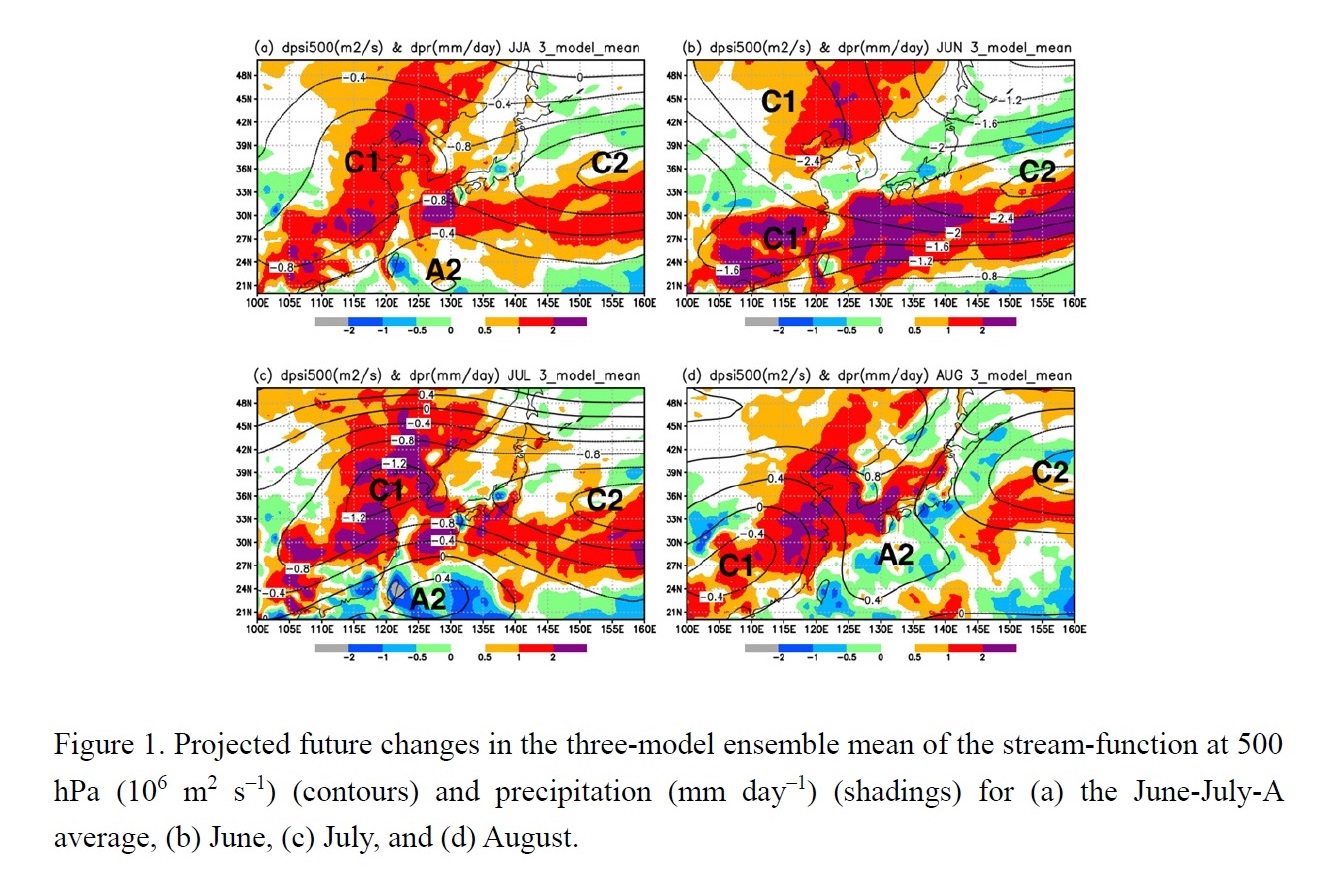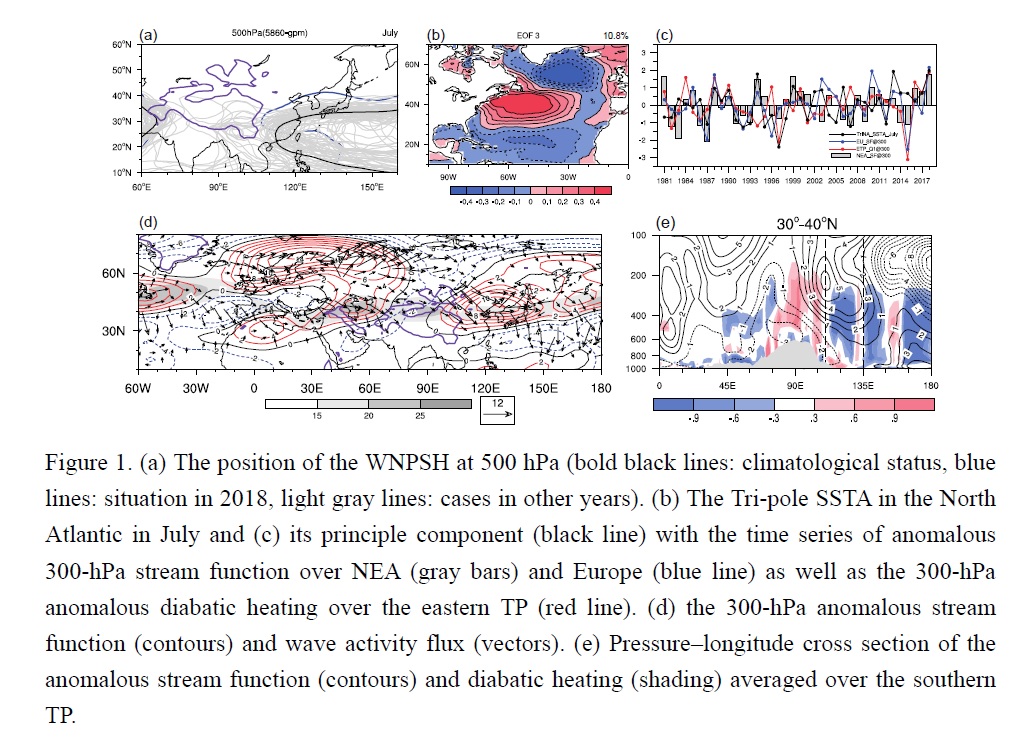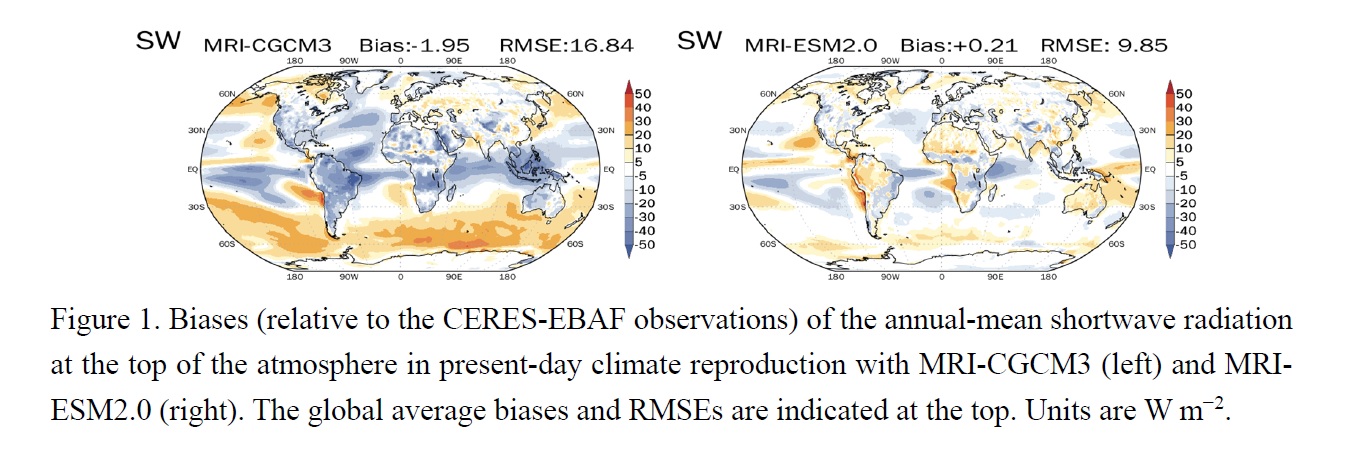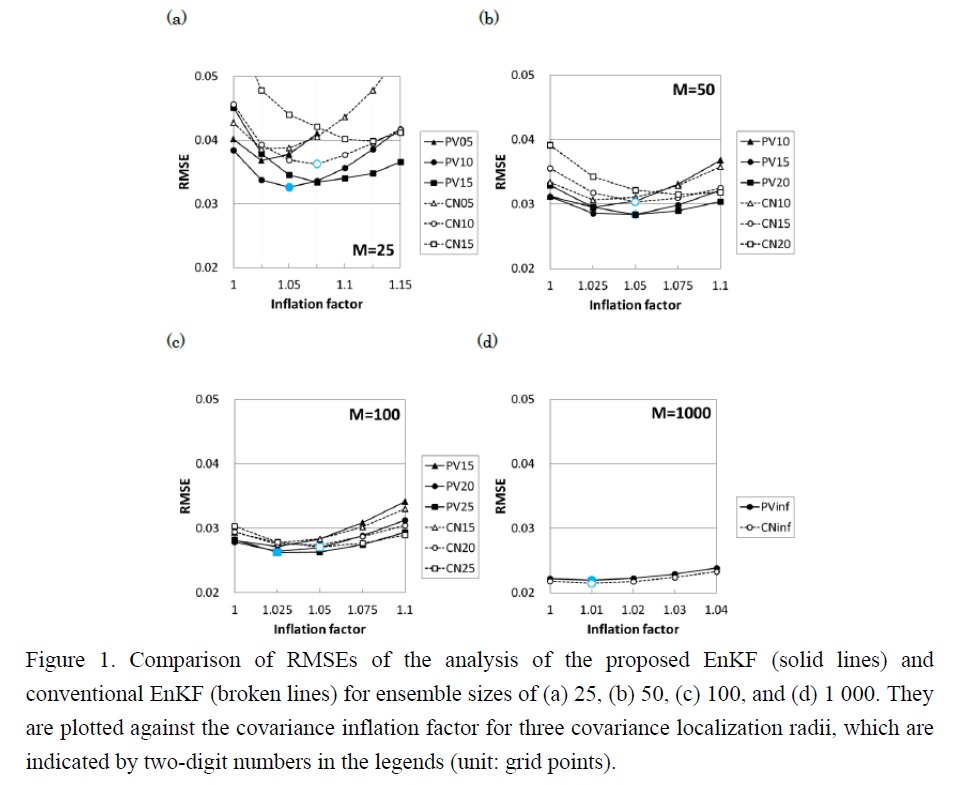JMSJ Awards
The JMSJ Editorial Committee presents the JMSJ Award to outstanding papers published each year.
JMSJ Awards in 2019
In 2019, the following papers were awarded. JMSJ Award 2019
Ose (2019)
Ose, T., 2019: Characteristics of future changes in summertime East Asian monthly precipitation in MRI-AGCM global warming experiments. J. Meteor. Soc. Japan, 97, 317-335.
https://doi.org/10.2151/jmsj.2019-018
Graphical Abstract
JMSJ Editor's Highlight
Highlights:
- Most regions of Japan lie within the northeasterly wind and associated downward motion zones of C2, leading to significant uncertainties in the future precipitation over Japan by the offset against the “wet-get-wetter” effect and possibly leading to even a future decrease in precipitation
- A wetter future climate is anticipated under weak subsidence or the upward vertical motion zone of C1 and C2, such as western Japan in August and the Southwest Islands of Japan in June.
Liu et al. (2019)
Liu, B., C. Zhu, J. Su, S. Ma, and K. Xu, 2019: Record-breaking northward shift of the western North Pacific Subtropical High in July 2018. J. Meteor. Soc. Japan, 97, 913-925.
Special Edition on Extreme Rainfall Events in 2017 and 2018
https://doi.org/10.2151/jmsj.2019-047
Graphical Abstract
JMSJ Editor's Highlight
Highlights:
- The poleward shift of WNPSH reached 40°N in July 2018 and broke the historical records since 1958.
- The extreme WNPSH anomaly was linked to the strongest positive tri-pole pattern of SSTA in the North Atlantic.
- The SSTA in the North Atlantic induced a wave-source over Europe, enhanced the diabatic heating over the eastern Tibetan Plateau, and finally resulted in the extreme WNPSH anomaly.
Yukimoto et al. (2019)
Yukimoto, S., H. Kawai, T. Koshiro, N. Oshima, K. Yoshida, S. Urakawa, H. Tsujino, M. Deushi, T. Tanaka, M. Hosaka, S. Yabu, H. Yoshimura, E. Shindo, R. Mizuta, A. Obata, Y. Adachi, and M. Ishii, 2019: The Meteorological Research Institute Earth System Model version 2.0, MRI-ESM2.0: Description and basic evaluation of the physical component. J. Meteor. Soc. Japan, 97, 931-965.
https://doi.org/10.2151/jmsj.2019-051
Graphical Abstract
JMSJ Editor's Highlight
Highlights:
- As a result of various improvements for the cloud scheme including the introduction of a new stratocumulus scheme, the underestimated biases in cloud reflection in the Southern Ocean that were persistent in the CMIP5 models have been significantly reduced.
- The accurate radiation distribution led to the implied ocean heat transport very close to the observation-based estimation, which contributed to the reduction of biases in the surface temperature distribution.
- The overall change in the global surface temperature relative to the preindustrial level is well reproduced, though the multi-decade-long change in the temperature trend since the middle of the 20th century is somewhat exaggerated.
Tsuyuki (2019)
Tsuyuki, T., 2019: Ensemble Kalman filtering based on potential vorticity for atmospheric multi-scale data assimilation. J. Meteor. Soc. Japan, 97, 1191-1210.
https://doi.org/10.2151/jmsj.2019-067
Graphical Abstract
JMSJ Editor's Highlight
Highlights:
- The proposed EnKF is superior in the accuracy of the analysis to the conventional EnKF unless the ensemble size is sufficiently large.
- The adjustment of balanced and unbalanced mass variables is necessary for the proposed EnKF to outperform the conventional EnKF.
- The computational cost of the proposed EnKF is about 10% more than that of the conventional EnKF.
Previous Awards
- JMSJ Award 2019 PDF Report (in Japanese)
- JMSJ Award 2018 PDF Report (in Japanese)
- JMSJ Award 2017 PDF Report (in Japanese)
- JMSJ Award 2016 PDF Report (in Japanese)
- JMSJ Award 2015 PDF Report (in Japanese)
- JMSJ Award 2014 PDF Report (in Japanese)
- JMSJ Award 2013 PDF Report (in Japanese)
- JMSJ Award 2012 PDF Report (in Japanese)
- JMSJ Award 2011 PDF Report (in Japanese)
- JMSJ Award 2010 PDF Report (in Japanese)










